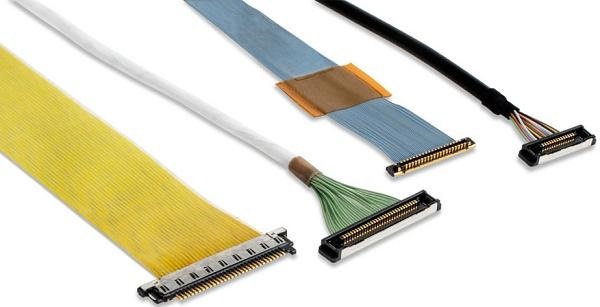Categorization:Harness Component
In consumer electronics, intelligent hardware, and high-precision sensor systems, the choice of wire harness directly affects the product's signal transmission performance and overall stability. The two common high-speed transmission solutions are FPC (Flexible Circuit Board) and extremely thin coaxial cable (micro coaxial cable). Both have their advantages, but in some high-demand scenarios, extremely thin coaxial cable is usually a more reliable choice.
Difference in anti-interference ability
FPC is suitable for applications with limited space and flexible wiring, but its anti- electromagnetic interference capability is limited. When the system needs to transmit high-speed signals in a complex electromagnetic environment, ultra-fine coaxial cables can effectively reduce crosstalk and external noise interference. For example, in camera module or wireless communication module applications, the transmission of high-integrity signals often relies more on ultra-fine coaxial cables.
Bandwidth and Signal Integrity
With the improvement of resolution and data transmission speed, using FPC alone in long-distance or high-frequency applications often leads to signal attenuation. The impedance controllability and strong shielding performance of ultra-thin coaxial cables make high-speed differential signal transmission more stable, avoiding issues such as image jitter and delay. This is also the reason why ultra-thin coaxial cables are commonly used in AR/VR devices, notebook screens, and high-end medical imaging equipment.
Three, flexibility and mechanical reliability
FPC structure is thin and light, with flexible wiring, but it tends to suffer fatigue fractures in multiple bends or dynamic movements. In comparison, ultra-fine coaxial cables perform better in terms of mechanical reliability, especially suitable for dynamic moving parts such as camera modules, folding screen hinges, and robot joint sensor systems.
Four, typical application scenarios of ultra-fine coaxial lines
High-definition camera module (for mobile phones, laptops, industrial cameras, etc.)
AR/VR display system
High-end medical imaging equipment
Aerospace and military electronics systems
Foldable or dynamically bendable equipment
Not all scenarios require the use of extremely thin coaxial cables. In cases of low-speed signals or extremely tight wiring spaces, FPC is still a high-cost-performance solution. However, in high-frequency, high-speed, strong interference environments, or dynamic bending requirements, extremely thin coaxial cables are usually the best choice.
I amSuzhou Huichengyuan,Long-term focused on the design and customization of high-speed signal cable harnesses and ultra-fine coaxial cable harnesses, committed to providing stable and reliable high-speed interconnection solutions. If you have related needs or want to learn more, please contact:Manager Yin 18913280527 (WeChat number the same)。